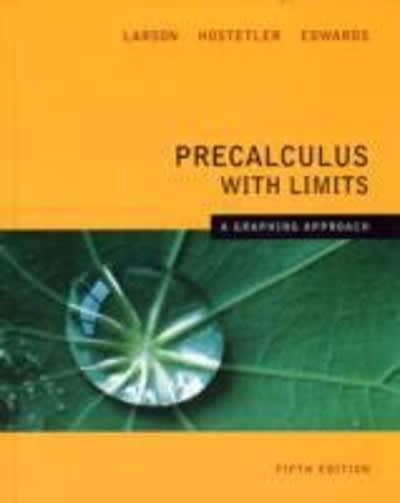Question
A prospective study with a 2-year (24-month) follow-up was conducted among 10 residents of a nursing home in Springfield Illinois. Results are shown in the
A prospective study with a 2-year (24-month) follow-up was conducted among 10 residents of a nursing home in Springfield Illinois. Results are shown in the table for all individuals who either died or were censored before the end of the follow-up period.
Follow-up Time (Months) | Events |
2 | Death |
4 | Censored |
7 | Censored |
8 | Death |
12 | Censored |
15 | Death |
17 | Death |
19 | Death |
20 | Censored |
23 | Death |
Using the data from the table, calculate for all deaths (fill in the table below):
- The probability of death at the exact time when each death occurred (2 points)
- The probability of survival beyond the time when each death occurred (2 points)
- The cumulative probabilities of survival (2 points)
Follow-up Time (Months) | Event | Probability of death at the exact time when the death occurred | Probability of survival beyond the point when the death occurred | Cumulative probability of survival beyond the time when death occurred |
2 | ||||
8 | ||||
15 | ||||
17 | ||||
19 | ||||
23 |
IV. What is the cumulative survival probability at the end of the follow-up? (2 points)
V. What is the simple proportion of individuals apparently surviving (i.e., not observed to die) through the end of the study's observation period? (2 points)
VI. Why are the simple proportion of surviving and the cumulative probability of survival different? (5 points)
Step by Step Solution
There are 3 Steps involved in it
Step: 1

Get Instant Access to Expert-Tailored Solutions
See step-by-step solutions with expert insights and AI powered tools for academic success
Step: 2

Step: 3

Ace Your Homework with AI
Get the answers you need in no time with our AI-driven, step-by-step assistance
Get Started


